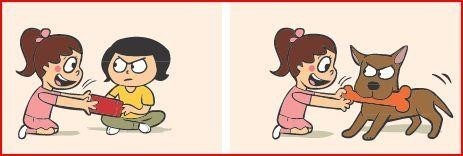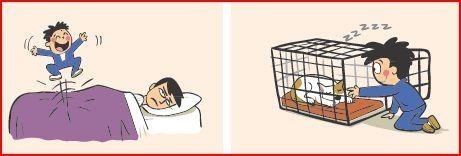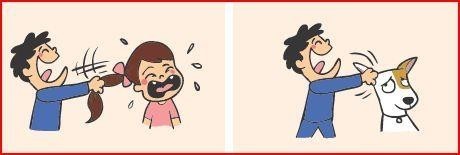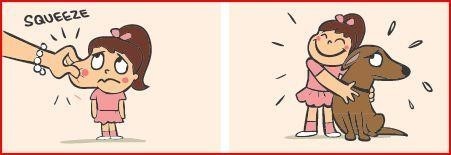Many hounds are welcomed into homes with young kids and with some patience and careful management most greyhounds can develop a lovely bond with their young family members. We aim to place more resilient hounds in homes with kids, as well as ones who have previously been around children at their racing kennels.
It’s worth noting that Greyhounds typically aren’t overly tactile rough and tumble type dogs, if this is what you are after then another breed may be a better fit for you.
It often takes upwards of three months for a dog to settle into a new home, so during this time and especially the first week when their stress hormone levels are elevated, it’s particularly important to take introductions slowly and go at the greyhound’s pace - as exciting as it is to have a new family member it takes time to develop friendships!
Points to remember:
It is beneficial for parents learn to read dog body language so they can see when their greyhound is saying they need a break or some space to keep kids safe and the hounds happy. If the greyhound’s body is loose and more animated and they are seeking out interaction that typically means they are comfortable. If they are moving slowly, trying to get away, or are still and frozen then that is likely an indication that they need some space.
Young, unsupervised children are most at risk of being bitten by dogs. Most bites occur on the face and most dogs involved in these incidents are known to the child.
Supervision - Use a crate, or other safe contained area e.g. play pen, baby gates, when settling in your new dog. This will help keep your greyhound and children safe when your attention is distracted. If you cannot supervise your child and dog, the dog should be in the safe area.
Sleeping - Leave the dog alone when they are sleeping or resting. Rather than approaching the hound, call them over an invite them toward you, otherwise let them have some down time. Some greyhounds sleep with their eyes open and can startle and snap if touched when sleeping; it’s safest if they sleep in a crate rather than on furniture or with the children laying on the floor.
Food and toys - Feed your greyhound in a separate area from the kids and supervise interactions with toys, as these are both highly valuable to dogs and often sources of conflict.
Patience - Allow your new dog time to get used to your family, everything is brand new for them and they are likely experiencing a degree of fear or stress - it may take up to 3 months before they feel comfortable and at home. Involve your kid in training with the hound, this will help to build a relationship, especially if there are lots of yummy treats involved.
If there is a baby, then there is no requirement that the dog and baby have contact, it is safest if they are completely separate e.g. using play pens or baby gates. If you already have a baby or are planning a new arrival, then we can provide additional information to ensure it’s as smooth a transition as possible.
Understanding what actions might cause the family dog to bite are common sense:
- Dogs want to eat their food in peace rather than be bugged or have someone else play with it, just like us.

- We teach children that it’s wrong to steal toys from each other, it is also rude to steal toys from dogs.

-
Putting your face into a dog’s face can be scary or irritating, just like with people.

-
No one likes being pestered when they’re resting sleeping, fortunately for us humans, we can often close our bedroom door. Similarly, dogs need a safe space where they can be away from kids and excitement. Kids should avoid bugging the dog when they are sleeping or resting. Instead call the dog over and give them a choice if they want to hang out with the kids or would rather have some down time.

-
Kids dislike being handled roughly, so do dogs.

-
It’s rude to climb on, step on, or otherwise invade someone else’s personal space and the same goes for dogs.

-
Squealing and yelling can frazzle both humans and dogs.

-
In general, dogs dislike being hugged, opt instead for long slow pats with an open palm from their collar to tail or chin to chest.

